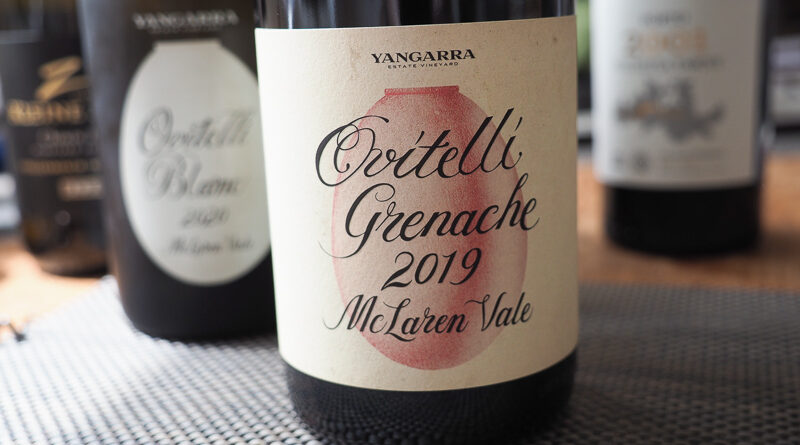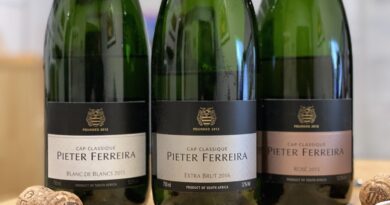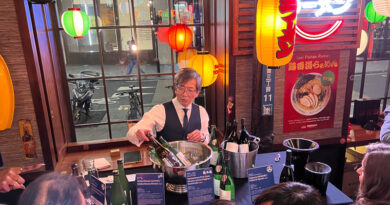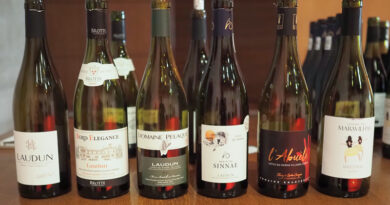Grenache : a Study
(/ɡrəˈnæʃ/)
Grenache is one of the most widely planted red wine grapes planted on the globe, which would explain the vast variety of synonyms: Garnacha, Alicante, Nieddu, Cannonau, Lladoner, and Uva di Spagna among them.
This early budder / late ripener is a heat seeking missile. Its sturdy wood, penchant for dry, rocky soils, and upright growth pattern makes it suitable for hot, arid climates, and able to withstand periods of drought. The thin skinned, light fleshed, sweet grape tends to make wines higher in alcohol and lighter in colour, often desirable traits in a blending partner. Pure varietal Grenache haven’t been all that common; most often you’ll see it blended, as with Châteauneuf-du-Pape, for example, or GSM blends from South Australia. These blending mates make up for Grenache’s lower acidity, and tannins.
Increasingly, Grenache has been reinvented as a solo performer, and treated with the right / light handed touch it deserves. Earlier picking, older vines (oft bush vines), and hands-off winemaking has allowed the grace within the grape to emerge. We’ve tasted stunning, light-footed, finessed examples from South Africa, McLaren Vale, Roussillon, Rioja, Navarra, Sierra de Gredos, Montsant (home to the rare Garnaha Peluda, or ‘Hairy Garnacha’), the Rogue Valley, and elsewhere, that have charmed with their lightness of being, while impressed with their pure fruit intensity.
Red fruit notes are hallmarks: raspberry, strawberry, and cherry, along with a characteristic white pepper, spice, and dried herb savouriness. There’s a move towards leather and tar with age. Grenache’s versatility also makes it a feature player in rosés (Tavel, Navarra) and fortified Vins Doux Naturels of Roussillon, such as Banyuls.
These are some of the recently tasted Grenache that made an impression on Goode (JG) and me (TR)
David & Nadia Grenache 2018, WO Swartland, South Africa
From early 2000s planted Paadreberg and Malmesbusy vineyards, primarily organic, this was 60% whole bunch fermented before aging 1 year in old 500L barrels. Light and graceful, with a whisper of tannins holding wild raspberry, wild strawberry, cherry leather across a taut 13% palate. Tannins are soft and sticky, hugging this through the lingering kirsch-licked finish. Lovely finesse throughout. 92/100 (TR)
Gomez Cruzado Pancrudo 2019, DOCa Rioja, Spain
Part of their Selección Terroir series, Pancrudo is old bush vine garnacha rooted in the ferrous clays of Badarán (Upper Najerilla), at 650m. After a native ferment in stainless, this underwent MLF in a mix of 65% new French oak and 35% in concrete eggs. Fragrant wild raspberries, ripe strawberries flood the juicy, generous palate, with savoury worked leather bedding the perfumed and spiced red fruits. There is ample concentration in this 15% wine, but equal ample freshness to counter. The finish lingers with mineral salts and perfumed white pepper. 92/100 (TR)

Niepoort NAT’Cool! Tinto Navarra 2020, DO Navarra, Spain
Dirk Niepoort’s NAT’Cool! range of wines were created to meet certain criteria : be made as naturally as possible, be low alcohol, be terroir-driven, use native grapes to the region, be affordable, and be so smashable that it’s only sold in 1L bottles. In 2020, the Nat Cool family grew with this foray into Navarra, the result of one of son Daniel Niepoort’s numerous trips to Spain where he came across incredible old Garnacha bush vines rooted in calcareous schist soils at Viña Zorzal. This was native fermented in stainless and cement. This is a light and lifted Garnacha, with candle wax, wild strawberry, crushed roses, rhubarb, hugged by finely gritty tannins and dusted with white pepper. There is a lovely lifted floral perfume here, showing garnacha’s lighter side. A welcome addition to the family. 90/100 (TR)
Comando G La Bruja de Rozas 2018, Sierra de Gredos, Spain
Comando G is a partnership of minds, mates and winemakers Fernando García and Dani Landi. La Bruja de Rosas is their village wine, sourced from numerous vineyards around Las Rozas de Puerto Real in Castilla y Leon, between 900-1200m altitude, and from granitic sands. Organically and biodynamically farmed 50-80 year old garnacha vines is native fermented with a lengthy maceration, followed by nine months in oak vats. Pouring a transparent crimson hue, this opens with ample wild scrubby florals, medicinal cherry, kirsch, wild strawberry jam. Tannins are sticky and acidity is lofty, both helping draw this youthful red to a lightly warming, sasparilla-scented close. This is a ballerina hippo, with much heft and girth (14.5), but surprising lightness on its feet. For drinking now, with a slight chill. 90/100 (TR)
Comando G Rozas 1er Cru Garnacha 2018, Sierra de Gredos, Spain
Friends and winemakers Fernando García and Dani Landi were drawn to the near-forgotten high altitude old-vine vineyards of Sierra de Gredos, near Madrid, and began to gain the trust of the previous generation(s) who had tended to these wind-swept vines for the Co-ops. With time, came trust, and the chance to see these old vines into these current wines.Taking its inspiration from Bourgogne, the 1er Cru Garnacha grapes come from a small, cool, 3ha plot at 900 meters, near the town of Rozas de Puerto Real. It was native fermented in open vats over 50 days prior to resting one year in 500L French barrels. Light crimson in hue, this opens and streams mineral salts along a lofty palate, perfumed with rock roses, wild raspberry, sapid plum, summer strawberry. Tannins are slight, striated, and sticky, jacketing this medium bodied, plumped red (13.5 degrees for garnacha!) to a lingering mineral, subtly spiced, lightly warming finish. Lovely delicate touch for garnacha, and best enjoyed with a slight chill. 92/100 (TR)
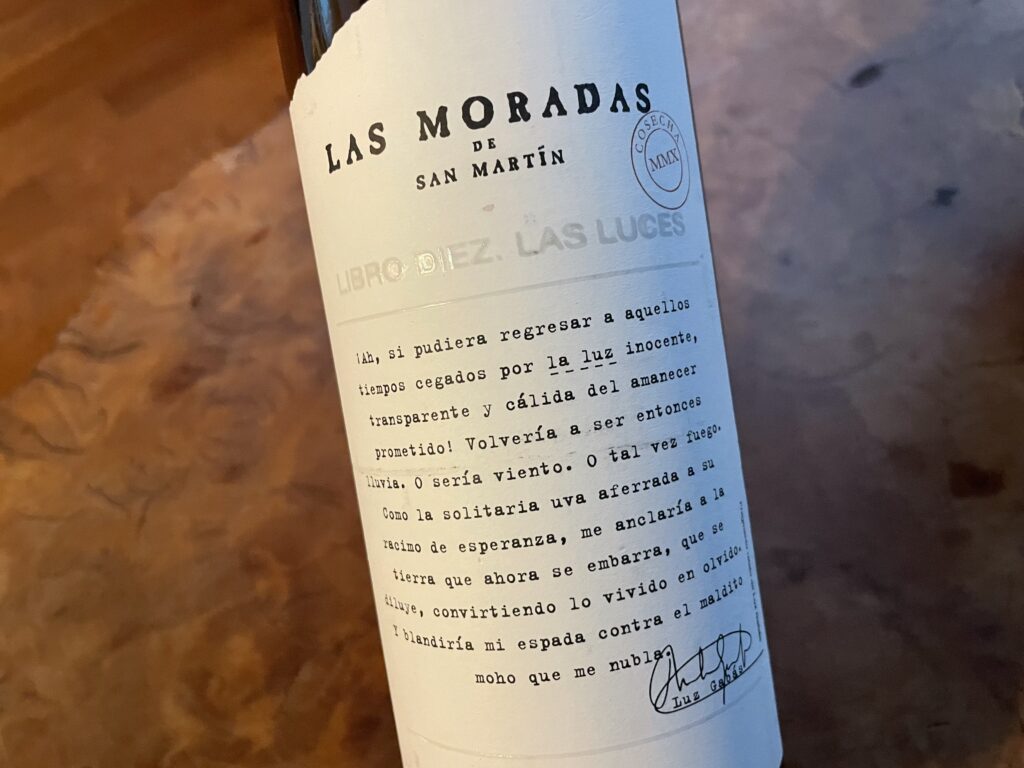
Las Moradas de San Martin Libro Diez Las Luces 2010, DO Vinos de Madrid, Spain
Las Moradas de San Martín began in 1999 on the Madrid side of the Gredos hills, with an aim to recover ancient Garnacha vineyards that had been cultivated since the 12th century near the municipality of San Martín de Valdeiglesias. Isabel Galindo is the talented winemaker here, seen as a visionary for gently coaxing the authenticity and stories out of the old vines in her care. This is her flagship wine, made only in exceptional years. This Garnacha comes off La Centenera plot, 100+ years old, covering an area of 3.25 hectares on a granitic mountain plateau (900m) in the Madrilenian slope of the Sierra de Gredos. Destemmed grapes were native fermented in new, 500L French oak, where it remained for 18 months prior to bottling without fining or filtration. Showing great freshness still for a wine 12 years on, with dried florals, and dried cherry woven with black plum, wild raspberries, alpine mint and rosemary, black tea, ferrous notes over a base of worked leather. Acidity is still mountain lofty, while tannins are long, fine, and firm, sunken into the fruit now with time, and boning this full, finessed red through a lingering dusting of pink peppercorn. Quite striking, and memorable, drinking beautifully now, and still with time ahead. 94/100 (TR)
Las Moradas de San Martin Libro Once Las Luces 2011, DO Vinos de Madrid, Spain
Las Moradas de San Martin sits at a height of 870m above sea level, on the fringes of the Sierra de Gredos, in the unique landscape of San Martín de Valdeiglesias. Twenty-one hectares of vineyards surround the winery. From old vine (most over 100 years), high altitude garnacha located at 900m in the windy Madrilenian slope, these organically farmed vines are rooted in the estate’s granitic sandy soils. Winemaker Isabel Galindo is very hands-off in the winery, respecting the vines and farming, and according to her, this is her masterpiece, made only in exceptional years. This garnacha comes off La Centenera plot, 100+ years old, covering an area of 3.25 hectares on a granitic mountain plateau (900m) in the Madrilenian slope of the Sierra de Gredos. Destemmed grapes were native fermented in new, 500L French oak, where it remained for 18 months prior to bottling without fining or filtration. Strikingly savoury and surprisingly knit, laced by salinity and woven with dark and dried cherry, black plum, dried dark florals, black tea leaves, dried tobacco, pen ink, crushed granite on a plush palate. Acidity is mountainous and lofty, and tannins are fine and grippy, supporting the cushy fruit into its well-worked frame. The stony saline finish lingers forever. A wine of gravitas, drinking now, but with years ahead. enjoy with a slight chill. 7950 bottles produced. 94/100 (TR)
Las Moradas de San Martin Initio 2013, DO Vinos de Madrid, Spain
Las Moradas de San Martin sits at a height of 870m above sea level, on the fringes of the Sierra de Gredos, in the unique landscape of San Martín de Valdeiglesias to the south-east of Madrid. Twenty-one hectares of vineyards surround the winery. From old vine (some over 100), high altitude garnacha located at 900m in the windy Madrilenian slope, these organically farmed vines are rooted in the estate’s granitic sandy soils. Winemaker Isabel Galindo is very hands-off in the winery, respecting the vines and farming. After a week of cooler maceration, this was native fermented over three weeks prior to heading to French barrels for 14 months prior to the final blend. This was then bottled without fining or filtration. Dense and concentrated with layers of tobacco, black cherry, dark earth, dark cocoa, burnished orange peel and broken stones run the length of the powerful, 15% palate. Tannins are ample and structural, though well absorbed into the depth of fruit. Acidity is naturally lifted, helping to buoy this powerful red through the lengthy saline finish. This is a powerful, masterful red that is drinking beautifully now, but will reward with cellaring. 92/100 (TR)
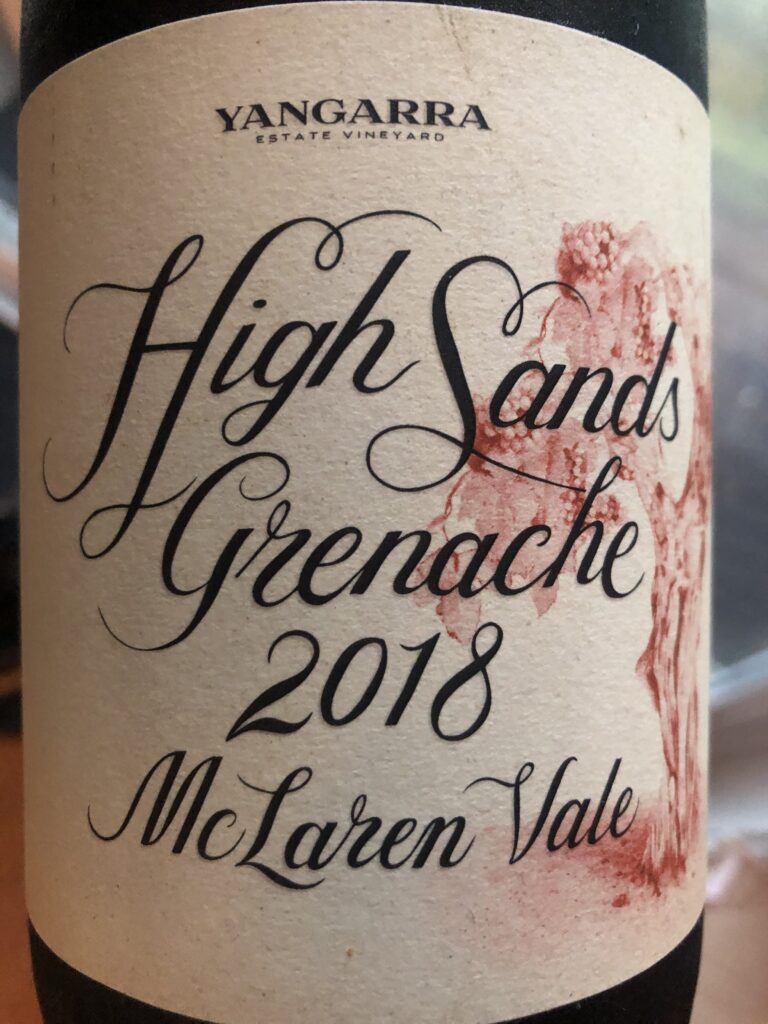
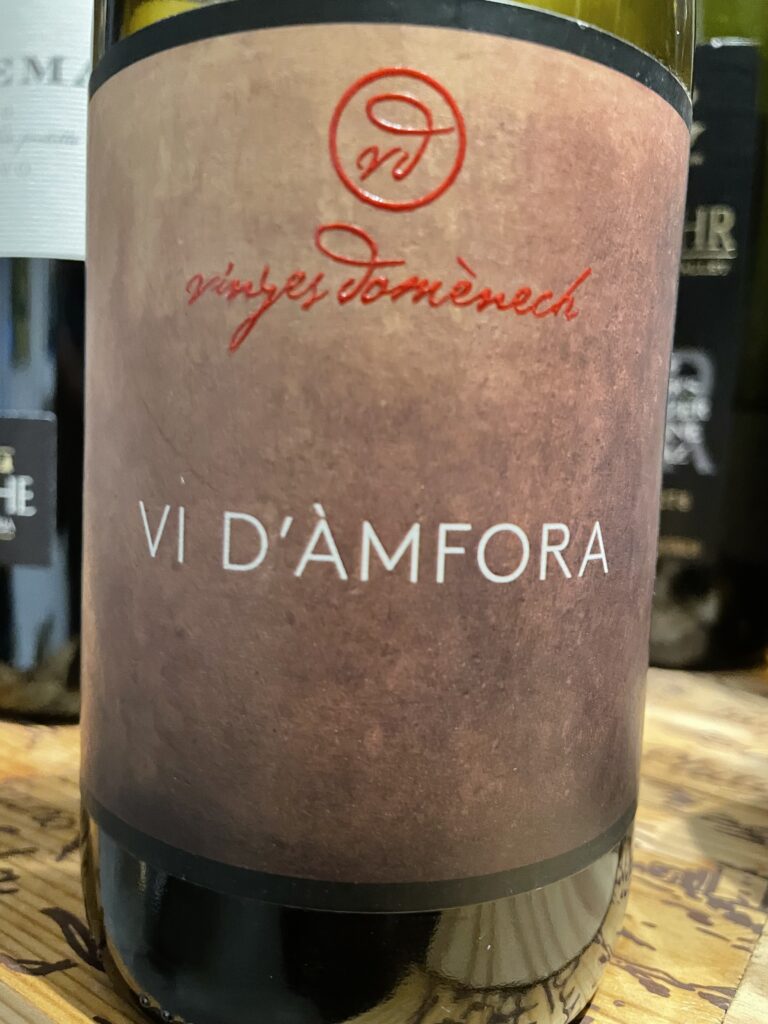
Vinyes Domènech Vi D’Àmfora Natural 2020, DO Montsant, Spain
From an amphitheatre vineyard surrounded by forest at 600m, this biodynamic Garnacha is rooted in red clay and limestone, and is produced without adding SO2. After a native ferment, this aged in 300L amphora. Perfumed stony florals, wild plum, fragrant iris streams across a light, lifted, limestone lit palate. Tannins are chiselled, and acidity is buoyant. Impressive mountainous graceful Garnacha. 92/100 (TR)
Yangarra High Sands Grenache 2018, McLaren Vale, Australia
High Sands is Yangarra’s Holy Grenache Grail, capturing the essence of their prized old vines. From their McLaren Vale Blewett Springs estate, this biodynamic High Sands block is perched at the top of the ridge, with gnarly old bush vines from 1946 rooted in deep silica sand soils. This was destemmed with 50% whole berry, native fermented, and kept in older French oak for 11 months, prior to bottling without fining. This certainly achieves the trinity of intensity, lightness of being, and structure, with a quiet confidence and nonchalant restraint that lets the finessed purity of this wine shine. Fragrant plum, wild blueberry, sweet wild strawberry, gum tree, and a wash of mineral salts flood the palate, shockingly fresh and finessed for its 14.5%. Tannins are long and lissom, sticky just enough to pin in the fruit to a lingering finish. Though there is a gently ripe sweetness here inherent in grenache, there is a savoury saltiness that rises to match, in the end creating a memorable harmony. Drinking beautifully now, this will certainly continue to hold in your cellar over the next few years. 94/100 (TR)
Ochota Barrels The Green Room Grenache 2019, McLaren Vale, Australia
From McLaren Vale’s Onkaparinga Hills, this Grenache was based on a vineyard planted in 1946 and on limestone and schist soils. Predominantly whole bunch and entirely native fermented, this fruit spent 88 days on skins before being basket pressed to older French barriques for a couple of months before being bottled unfined and unfiltered with a wee tip of sulphur. Light and lithe, with wild strawberry, perfumed summer raspberry, savoury whiffs of cured meats, and dried summer herbs, all finely, firmly gripped with a riff of skin tannins. Acidity is buoyant, and alcohol a welcome 12.8 degrees (for Grenache!). The soils give a pixellated acidity, while the vine age gives it a recognizable gravitas. 91/100 (TR)
Ochtota Barrels One Eight Six Grenache 2018, Blewitt Springs, McLaren Vale, Australia
One Eight Six refers to the 186 days on skins this grenache spent. From the same Blewitt Springs site as the beloved dry farmed Fugazi Grenache (planted 1946), this small lot of 288 bottles was subject to more of Taras Ochota’s experimental side, to a very positive result. Whole bunch fermented in a headless puncheon, where it remained on skins until it was basket pressed off, and bottled unfined and unfiltered. So smooth and linear it comes across nebbiolo-esque (really), with earthy raspberry, kisses of sarsaparilla, graphite and plum. Fine spice and ample texture in the mouth provide interest, and an effortless swell of juicy acidity creates smashability. Supple and moreish. 93/100 (TR)
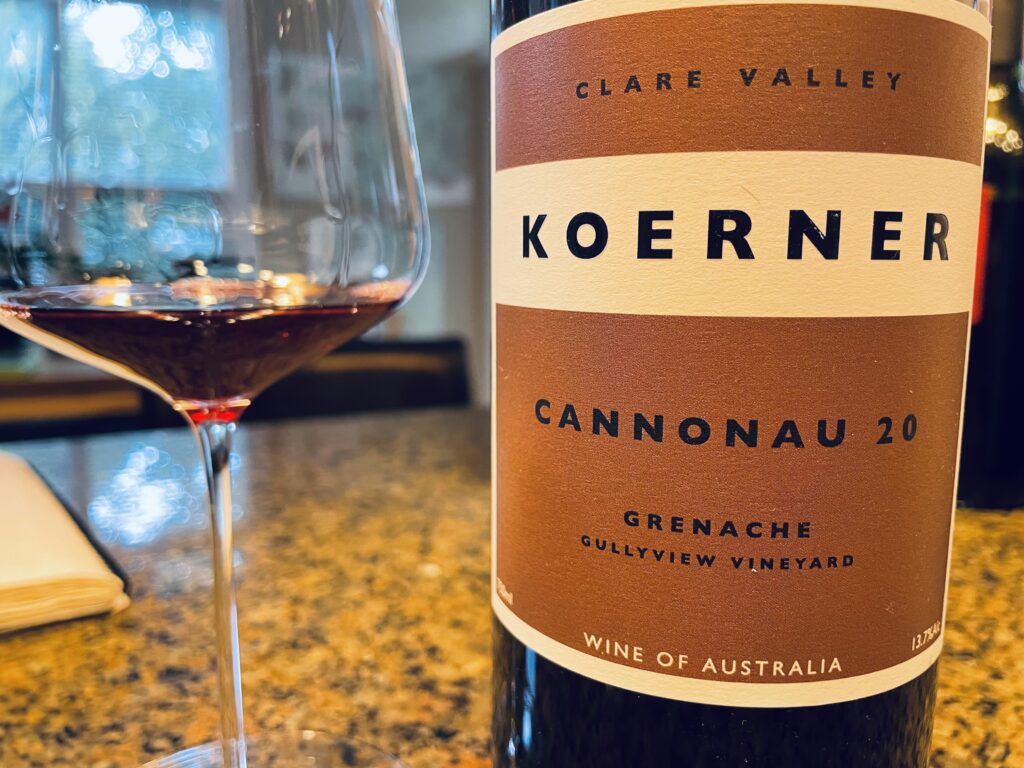
Koerner Cannonau 2020, Clare Valley, Australia
Brothers Damon and Jono Koerner show classic and alternative Clare varieties through a variety of winemaking vessels and styles, all from estate fruit, and all with low intervention. From Watervale’s Cullyview Vineyard, these Cannonau (Grenache) vines were planted in 1935 on the region’s terra rossa / red clay on limestone soils. This was 50% whole berry, entirely destemmed (no whole bunch), and native fermented in open top stainless, with 2 weeks’ maceration. It then aged in 2000L Slavonian foudre for 9 months, prior to a 3 month tightening stint in stainless. It was bottled without fining or filtration. The soils make themselves present from first whiff: a savoury, iron-laden nose that carries onto the medium bodied palate, pulling wild cherry, forest berries, dried leaves, fragrant strawberry along with, all lit from beneath with a buzzy limestone base. Tannins are fine and lightly raspy / sticky, hugging this pleasantly fresh (13.8%) red to a white peppery finish. Smart and smashable, as is the Bros. way. 93/100 (TR)
Domaine Piétri Géraud Banyuls Traditionnel Cuvée Méditerranée 2015, AOP Banyuls, France
This 26 hectare organically farmed family estate is operated by two generations of women: Maguy Piétri-Geraud and her daughter Laetitia. They make a range of wines from Collioure and Banyuls, including VDNs and table wines. This cuvée comes from the area’s schistous soils, and blends 90% Grenache Noir and Gris, and 10% Carignan, from vines between 45 and 100 years. After 3 weeks’ maceration, fermentation began, and was muted with grape spirit to leave 90 g/L RS. It was then aged 1 year in concrete tanks, then 4 years in 1 year old barrels, kept outside and directly exposed to the elements (ouillé, or topped up, throughout). The resulting wine is complexed with layers of roasted hazelnut, toffee, molasses, caramelized pecans, and freshly roasted coffee, and christmas cake spices. There’s a slight grip to the sides, along with a stream of acidity, which cuts the richness on the 17.5% palate. Such a special wine to drink and enjoy, ideally with darkest chocolate / espresso torte. 91/100 (TR)
Domaine of the Bee, The Bee-Side Grenache 2021, IGP Cotes Catalanes, France
Domaine of the Bee’s second label (and smartly named / labelled The Bee-Side) is Grenache partially from their estate vineyards, plus neighbouring Jean-Marc Lafage’s vines. The estate fruit was partial saignée, and then blended with the whole, resulting in a very light rosé/red blend wine, while Lafage’s fruit was partial whole bunch. The lots were blended to create a light hued, light bodied red. Crushed florals, wild strawberry, delicate spices rule this smashable Grenache, bedded with stones. Gently whisper fine tannins wrap around the delicate and pure strawberry core, dusted with white pepper. Such a charmer, and at just 13.5%, one you can revisit often. 93/100 (TR)
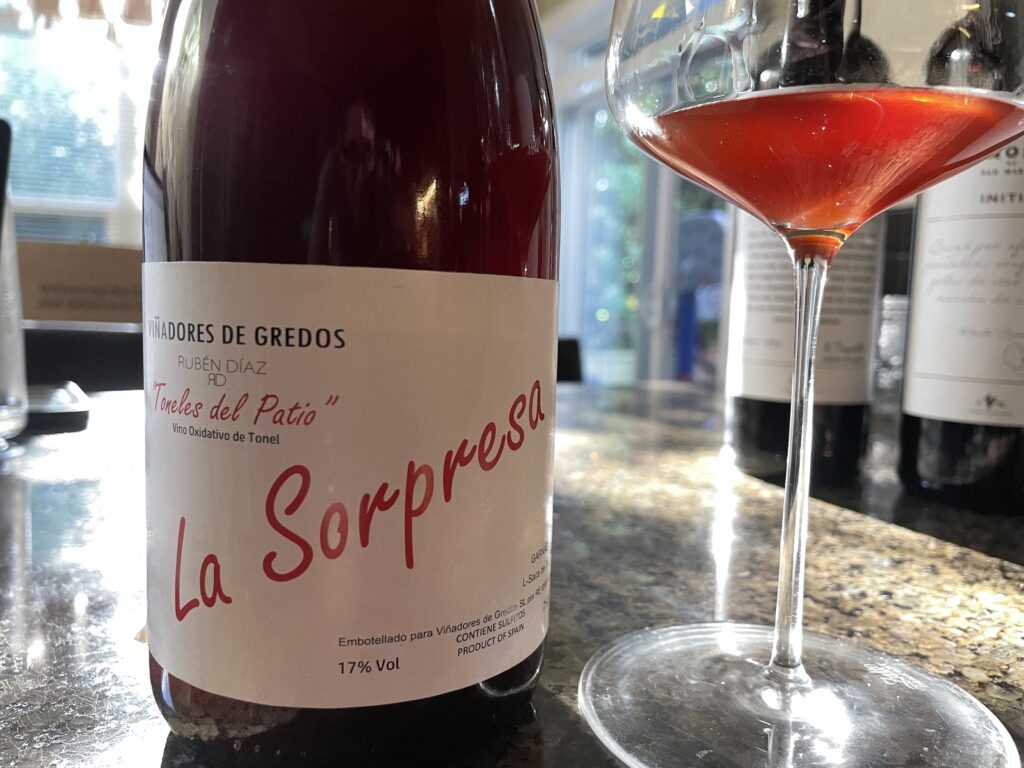
Viñadores de Gredos La Sorpresa Toneles del Patio NV, Cebreros, Spain
The wine region Sierra de Gredos, a 90 minute drive west of Madrid, is named for the neighbouring mountain range, and rests 650-1200 meters high. It’s a hotbed for young, adventuresome winemakers recovering ancient vines (in sandy, slate, granite), and winemaking traditions. Rubén Díaz is one of the emblematic winemakers of the area, born and bred in Cebreros. The Sorpresa line is one such historic tradition in the area of aging and topping up dry / table wines in a solera system, usually for special occasions. Toneles del Patio is old vine Garnacha from a solera born in 2010, in 500L barrels. After 4 years aging oxidatively in barrel the wine began to be topped up with similarly sourced and treated Garnacha. This Saca (drawing from the barrel) is from 2020. Pouring a hazy chestnut / auburn hue, this is heady with oxidative waves of toasted almonds, golden raisins, browned butterscotch, orange oil, scented bergamot, stretching long across the palate, at once evenly savoury and sweet, while beguilingly neither. This dry wine is laced with ample salinity that lingers incredibly long on the palate. With the haunting grace of a fine oloroso, but markedly different, this is a fascinating wine to explore over the course of an evening. 17%. 92/100 (TR)
Ramón Bilbao Límite Sur Garnacha 2017 Rioja, Spain
14.5% alcohol. Nice to see a varietal Garnacha from Rioja, and this is a lovely, fruit-forward elegant example. It’s perfumed with cherry and berry fruit and a touch of spiciness, and the palate is all about sleek, ripe raspberry and cherry fruit with a delicacy and poise, as well as good acidity and appropriate structure. There’s no obvious oak: this is all about direct, precise fruit and the elegance that Garnacha can bring when not worked too hard. 93/100 (£19.95 Great Wine Co) (JG)
El Hombre Bala 2015 Vinos de Madrid, Spain
14.5% alcohol. El Hombre Bala translates as The Human Cannonball. This is an old vine Garnacha from four vineyards in the Gredos mountains. It’s a joint project between Barcelona’s Vila Viniteca owners Quim Vila and Francisco Marti, and Comando G. Relatively pale in colour, it’s a fresh, aromatic, slightly spicy expression of Garnacha with real elegance. Red cherries, pomegranate and a touch of gravelly spicy savouriness, with a lightness of being and nice texture. There are some mountain herb notes, too. A really beautiful expression of this grape, and very much in the elegant style that Comando G have become known for. 94/100 (£21.75 Worth Brothers, UK agent is Boutinot) (JG)
Casa Rojo Enemigo Mio Garnacha de Secano, Sierra de la Pila 2020 Tierra de Murcia IGP, Spain
13.5% alcohol. From Jumilla. Enemigo Mio translates as My Nemesis, and the label depicts a grape-thieving wild boar. It’s a ripe, vivid expression of Grenache, but there’s some fruit sweetness and warmth here. Supple, refined, and with a smooth mid palate showing off cherry and raspberry fruit, but also a bit of grainy, tarry detail. A lovely ripe but well balanced Grenache that’s positively elegant considering the warmth of the climate. It opens out with some air very nicely. 93/100 (UK agent Matthew Clark) (JG)
Yangarra Ovitelli Grenache 2019 McLaren Vale, Australia
14% alcohol. This is from a 2 hectare block of dry-farmed bush vine Grenache planted in 1946 on Maslin Sands. The grapes are destemmed and fermented on skins over the whole autumn (158 days post-ferment maceraton) in ceramic eggs. The juice is then drained and matured in the eggs for another 5 months – no pressings are used. This has an intriguing nose that initially reminds me of Barolo. It’s fresh, dry, dusty and a bit spicy, with some rose petal, orange peel and cherry notes, as well as a slight acid lift. The palate is dry, grippy and grainy, but with nice fresh red cherry and plum fruit, as well as a twist of raspberry and tar. It’s very textural: a touch of silkiness, but also some pepper spice and then some grainy, drying tannins with a hessian-like texture. Good acidity, allied to firm but well managed tannins give this real grip: the Barolo analogy stands. It’s youthful and quite profound, and I think it will age in very interesting ways. I’ve not had an Australian wine like this, but I still think it communicates its place very well, albeit in quite a stern way as yet. 95/100 (JG)
Whitcraft Winery Grenache Stolpman Vineyard 2018 Ballard Canyon, Santa Barbara, California
12.8% alcohol. This is pale in colour – an infusion style of wine – with light red cherry colour. It’s somewhere between a rosé and a red, with a bit of crunchy tannin under the raspberry, redcurrant and red cherry fruit. Very supple and intriguing with a fine herbal edge to the sweet fruit. There’s amazing elegance and drinkability here with good acidity. Unlike any other Grenache you have had, but really compelling. 93/100 (JG)
Find these wines with wine-searcher.com

